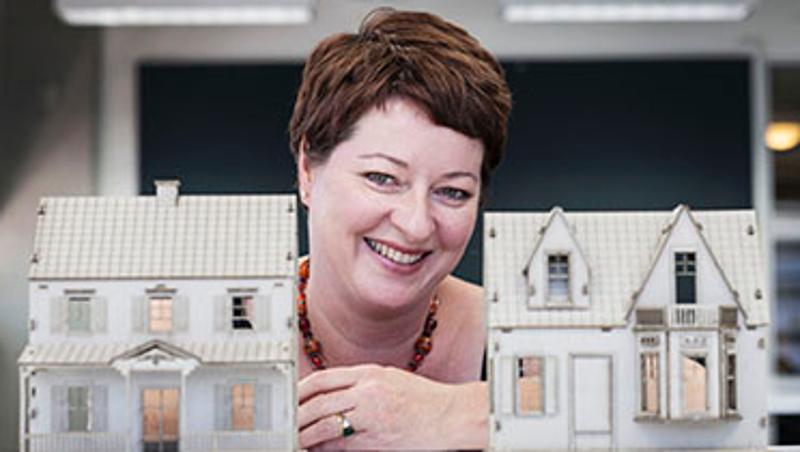
Could you bring up a family in a 35 sqm space?
Plenty of people do in the US and Europe, and in even smaller spaces, and now the "tiny house" movement is gathering pace in Australia, home of the world's largest houses, says QUT senior lecturer in interior design Dr Marisha McAuliffe.
Dr McAuliffe has introduced a tiny house design project for her students to prepare them for the future when living small becomes the norm.
"Downsizing to small-space living is a welcome trend to combat rising house and energy prices, more single-person households and our greater environmental and community awareness," Dr McAuliffe said.
"Inner city apartments in Australia are already 35 to 40 sqm and they are going to get smaller. We are looking at a shift in the philosophical outlook and how people live and experience space.
"It makes sense because small space living means more time, money and freedom, because the initial cost, maintenance and energy use are much lower.
"A tiny house person is typically Gen X, socially conscious, and ecologically and community aware who makes a conscious choice to downsize.
Dr McAuliffe said the tiny house movement was basically about downsizing your living space.
"People are choosing tiny houses to re-engage with the community. Tiny house dwellers are setting up 'villages' where they share resources such as lawn mowers, bicycles, laundries, as well as social spaces, roof top gardens, entertainment and gyms.
"In many cities you can hire a car for a day."
Dr McAuliffe said tiny houses came in all shapes, sizes and materials.
"They can be small, tiny or micro - some people are living in 8sqm houses - with built in kitchen and bathroom.
"They include tiny homes on wheels, tiny apartments, and narrow houses squeezed into alleyways between existing buildings or micro pocket lots.
"Many are off the grid, fitted with solar power, water collection and composting toilets.
Emphasis is on height over ground footprint so there are loft beds, overhead storage and multi-tasking furniture.
"Designing the interior of a tiny house presents our students with many challenges. The key is to keep space flowing, to remove obstacles.
"It's about multi-functional spaces and using all spaces, not just floor, but the walls and ceiling. Tables become beds, stairs have drawer storage, and clothes are hung on an old-style pulley-operated rack.
Dr McAuliffe said McMansions would one day be divided into smaller spaces of necessity.
"People won't like having empty rooms and unused space when maintenance and energy costs are high so they will make smaller apartments out of these houses," she said.
"We live in one of the most expensive countries for housing. Generation Alpha, the students currently starting at university, will not be able to afford a mortgage unless they come from a well-off family."
Media contact: Niki Widdowson, QUT Media, 07 3138 2999 or n.widdowson@qut.edu.au
After hours: Rose Trapnell 0407 585 901


